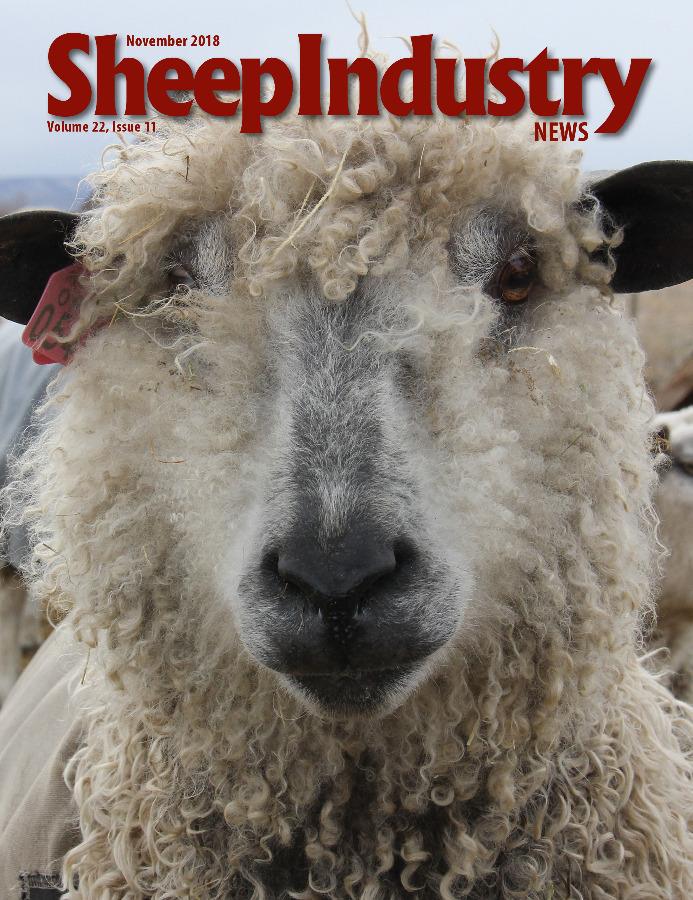
- November 2018
- President’s Notes
- Leading the Way
- ASI Announces Elections
- Lamb Chislic is Official Nosh of S.D.
- Guard Dog Program Supports Legal Defenses
- Raw Material Chronicles Woman’s Wool Industry Journey
- Around the States
- Nominations Open for ASI Awards
- VS Announces Reorganization Plans
- Market Report
- The Last Word
USDA’s Veterinary Services Announces Reorganization Plans
Veterinary Services Deputy Administrator Jack A Shere recently shared structural changes within the organization with industry stakeholders. The planned changes are outlined in the following letter.
Veterinary Services is charged with the vital mission of safeguarding the health of our nation’s livestock herds against the threat of foreign animal diseases and facilitating export markets on behalf of producers. This mission is more important than ever in our current global economy where increased trade and international travel bring both risks and rewards for American agriculture.
It’s essential that Veterinary Services is aligned in a way that allows us to operate efficiently and effectively while meeting customers’ expectations for service. With these goals in mind, Veterinary Services is making some organizational changes, effective Oct. 15.
Before I tell you about the details, I want to emphasize that this is not a major overhaul. As most of you know, Veterinary Services already underwent a significant reorganization five years ago. Many positive changes resulted from that reorganization, but we’ve also received some feedback from our employees, state partners and industry that we could be doing certain things better. The changes we are making today are in direct response to that feedback and very much in keeping with Secretary of Agriculture Sonny Perdue’s goal of making the U.S. Department of Agriculture the most effective, most efficient and best managed department in the federal government.
On the import-export side of the house, we plan to keep the service center structure in place because it’s worked well for our customers. However, we’re consolidating six centers into four to achieve management efficiencies and reduce our administrative footprint. The number of employees supporting our import-export activities will remain unchanged, and current offices will remain open. With four centers, we can continue to offer the full array of services to importers and exporters while leveraging expertise that has been cultivated at respective centers over the last five years specific to products, live animals, germplasm and embryos, and pet travel certification. Where necessary, VS stands ready to provide endorsement services at the point of need to help facilitate exports and best meet customer needs.
From state partners, we’ve heard about the importance of having an area-veterinarian-in-charge as the primary point of contact for each state, so we plan to return to that structure. The AVICs will work directly with state veterinarians serving as their primary point of contact for animal health questions and strengthening lines of communication. We’ll still have district offices, but much like the service centers, we’re moving from six to four.
These changes do not include any staff relocations. We are simply consolidating expertise and shifting reporting structures so we can provide better customer service. We are also renaming our three primary units to better reflect this new structure. Our current units Surveillance Preparedness and Response Services, National Import Export Services and Science Technology and Analysis Services will be replaced by Field Operations, Strategy and Policy, and Diagnostics and Biology.
Field Operations will account for the bulk of VS’ workforce – approximately 1,150 positions – and represents our “boots on the ground.” Field Ops will encapsulate both the service centers and the district offices as well as port services and emergency response efforts. Team members at the local level will continue to meet with farmers and ranchers on a regular basis as they do now. Dr. Brian McCluskey – who has been leading SPRS – will lead Field Operations.
Strategy and Policy will be comprised of approximately 316 positions and will consolidate our trade policy, select agent work and commodity animal health centers along with the Center for Epidemiology and Animal Health. Placing these groups together will reinforce linkages and ensure everyone has the full frame of reference to establish program direction. Strategy and Policy will be led by Dr. Rosemary Sifford, who currently leads NIES.
Diagnostics and Biologics will encompass our National Veterinary Services Laboratories and the Center for Veterinary Biologics in Ames, Iowa. Dr. Beth Lautner – who has been leading STAS – will oversee this work and approximately 448 employees. As the National Bio and Agro-Defense Facility moves ahead, this alignment will help us prepare for the increased diagnostics and scientific capabilities this facility will bring.
These changes – many of which are internal facing – better position our program to meet the increasing demands for our services. I know change of any kind can be unsettling, but I ask that you give VS the opportunity to prove the value of these changes. There are so many facets to what we do today, and these shifts will help us align available resources internally and improve communication so that we can do a better job of serving you at all levels of our organization. Having worked many years in the field and more recently at headquarters, I know firsthand the value of these changes and the need to ensure everyone is connected.

